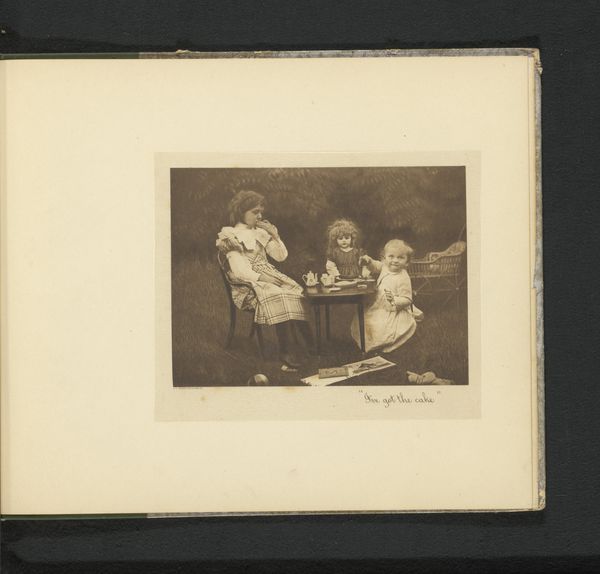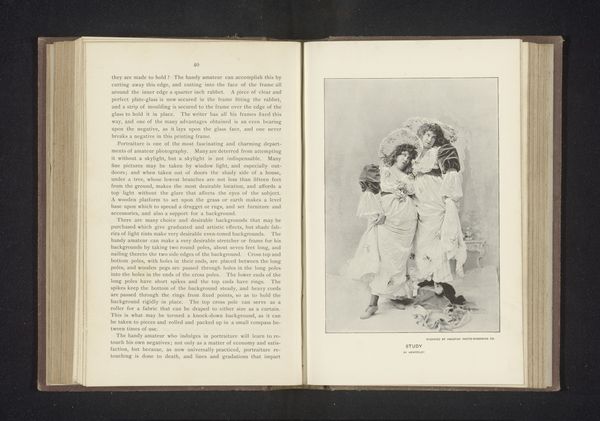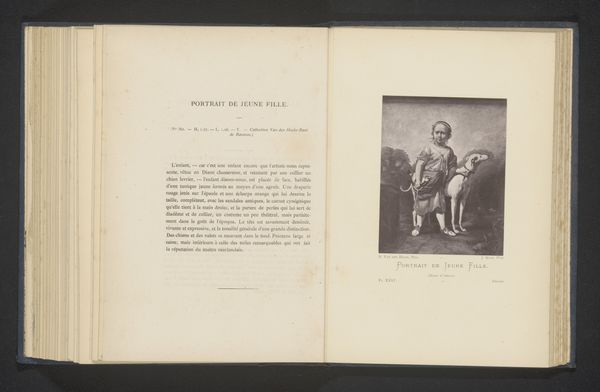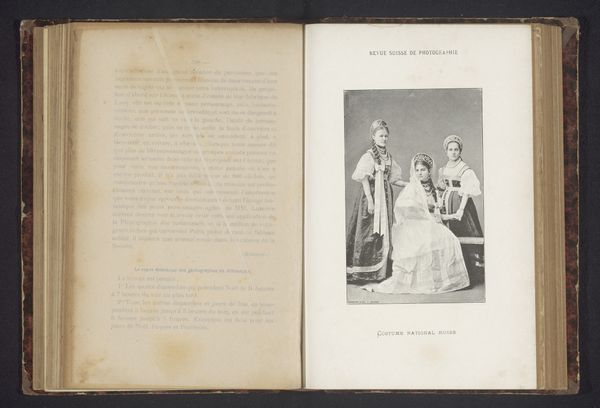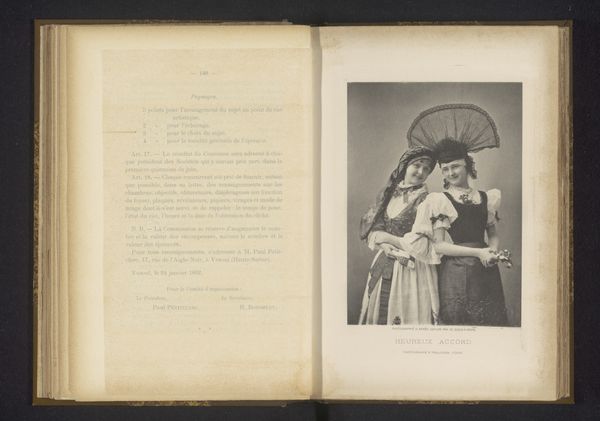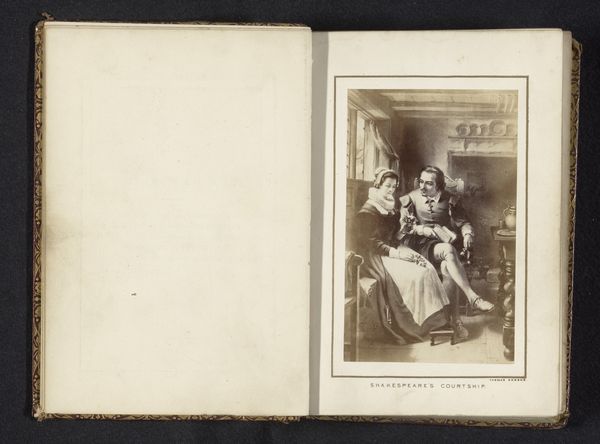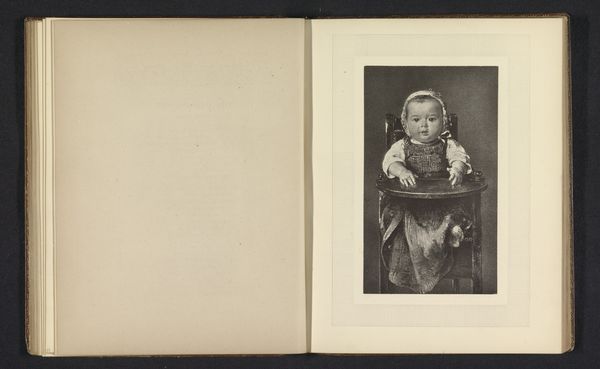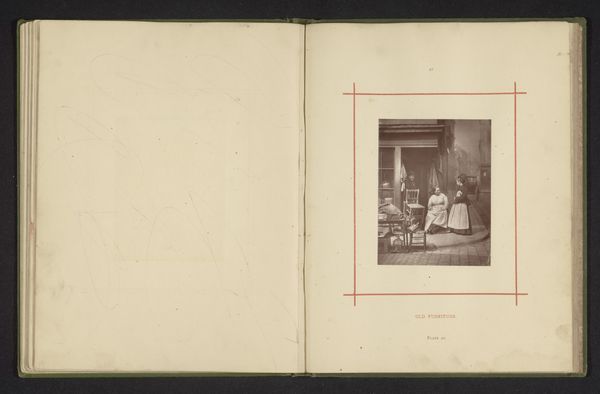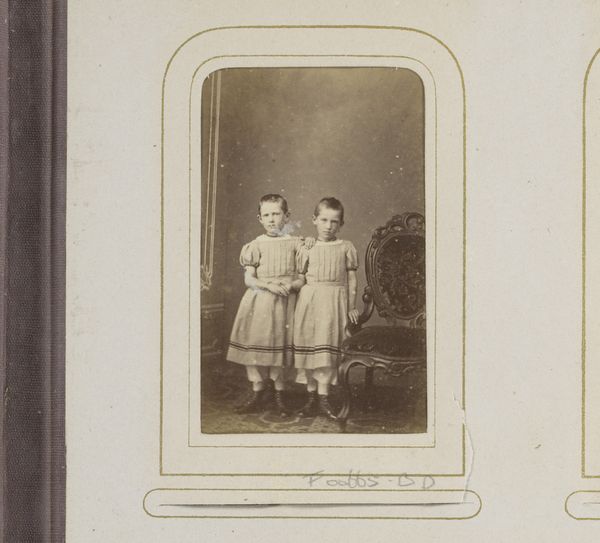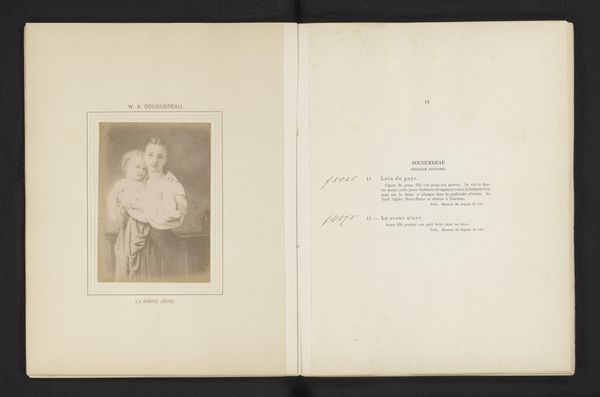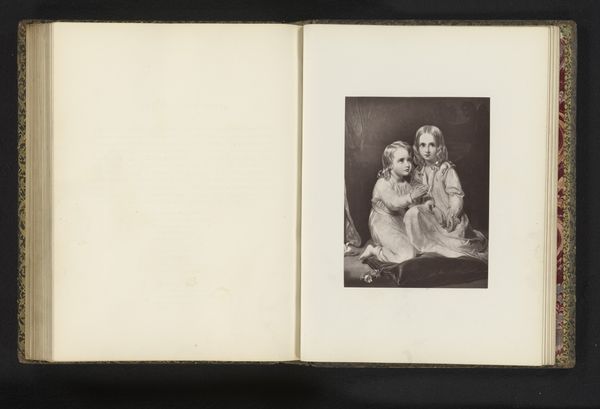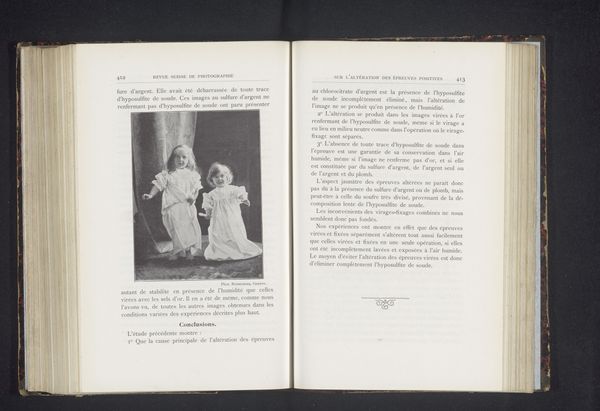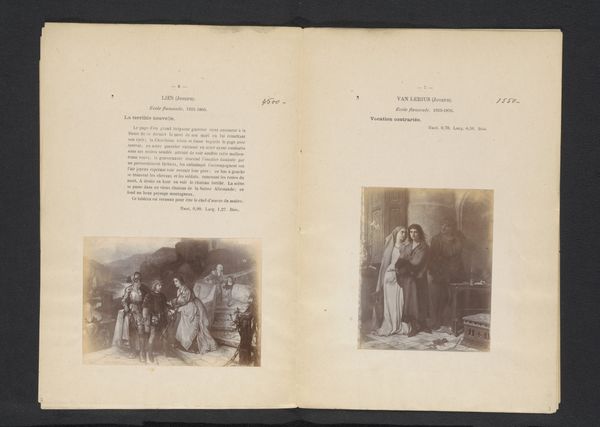
photography
#
portrait
#
photography
Dimensions: height 115 mm, width 76 mm
Copyright: Rijks Museum: Open Domain
Curator: Immediately, there’s something profoundly unsettling about this staged scene. Three children, seemingly frozen in time and space. Editor: Well, let's contextualize a bit. This portrait, created through photography before 1888, is entitled T.R.I.H. Prince William, Prince Frederick, and Prince Adalbert. It's an interesting depiction of nobility. The 'T.R.I.H' signifies 'Their Royal Imperial Highnesses.' Curator: Right, so we're observing how monarchy wanted to be seen. These children, burdened with the expectations of dynastic power, are posed in very specific ways. It feels artificial and detached from lived reality. Editor: Agreed. The very deliberate composition, combined with the soft sepia tones, gives it a sense of old-world grandeur and highlights class dynamics of that historical time. One could certainly say that these power structures trickle down even to the presentation of the children themselves. Curator: Consider also how this image reinforces established visual vocabularies associated with lineage and leadership. It almost mimics classical portraiture, which for centuries had depicted monarchs as distant and divine. This feels very deliberate. Editor: Absolutely. Furthermore, the medium of photography allowed for wider dissemination of these royal images, and solidified these images in popular culture and perception. This artwork, which appears to be fixed on the pages of an open book, is an accessible medium of visual propaganda. Curator: What is communicated here isn't childhood joy. It's manufactured legitimacy. How can these children become adults ready to rule, I wonder, with all of these heavy institutional structures placed upon them? Editor: Well, it serves as a complex insight into how institutions use art and visual representations to legitimize themselves and their role in society. It forces me to consider the long history of power dynamics in European culture. Curator: For me, it provokes considerations about agency: Whose story is being told? Who benefits? How much are these boys actually involved? And I leave with an unsettled feeling about art and institution’s ties. Editor: Yes, it’s certainly an early image to help prompt critical thought and re-imagining of historical visual cultures. And one that might have impacted political norms.
Comments
No comments
Be the first to comment and join the conversation on the ultimate creative platform.
